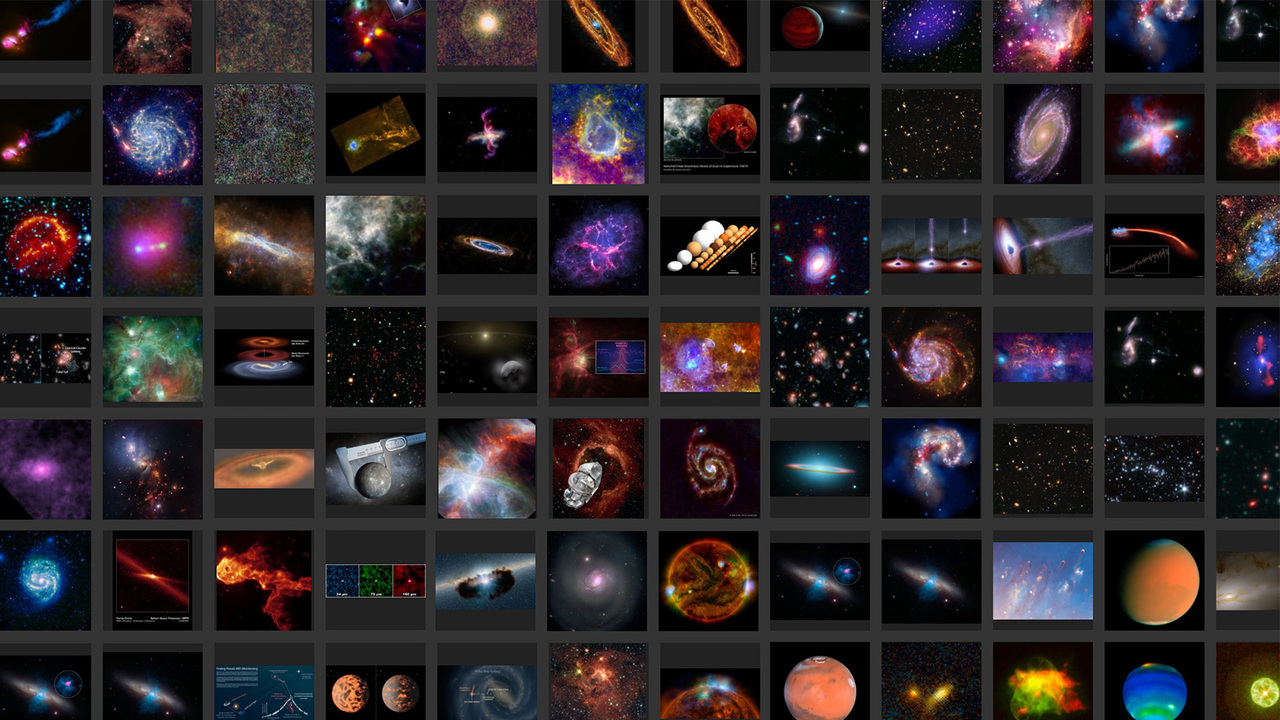Overview: AstroPix offers access to the public image galleries of many of the world's leading astronomical observatories under a single unified interface. Assets include a full range of astronomical observations, artwork, and charts spanning the field of astronomy.
IPAC is the host for the first-of-its-kind archive of astronomical data visualizations and artwork whose primary audience is the general public (which of course includes astronomers as well).
While significantly different from the science data holdings of IRSA, the AstroPix archive is still built upon many of the core strengths of IPAC. The image datasets are provided from a range of partner institutions including both NASA missions as well as other ground-based observatories around the globe.
AstroPix is built on the Astronomy Visualization Metadata (AVM) standard designed to meed the needs of the astronomy outreach community, which has its roots in needs defined by the IAU's Working Group on Communicating Astronomy to the Public. IPAC astronomers have a lead role in developing and deploying this image-tagging standard, which is now being routinely utilized by the outreach groups of many observatories.
A core focus of AstroPix is to become interoperable with related data visualization technologies and share assets with other institutions. Astronomical assets in AstroPix can easily be previewed in context in the sky using the AAS WorldWide Telescope and the downloaded files can be used directly in astronomical applications like Aladin. AstroPix also offers image feeds that can be incorporated into other applications; it is currently being used by planetarium software using the Data2Dome initiative (which is largely based on the AVM standard).
AstroPix is one of the projects supported under NASA's Universe of Learning.
This material is based upon work supported by NASA under cooperative agreement award number NNX16AC65A. Any opinions, findings, and conclusions or recommendations expressed in this material are those of the author(s) and do not necessarily reflect the views of the National Aeronautics and Space Administration.




